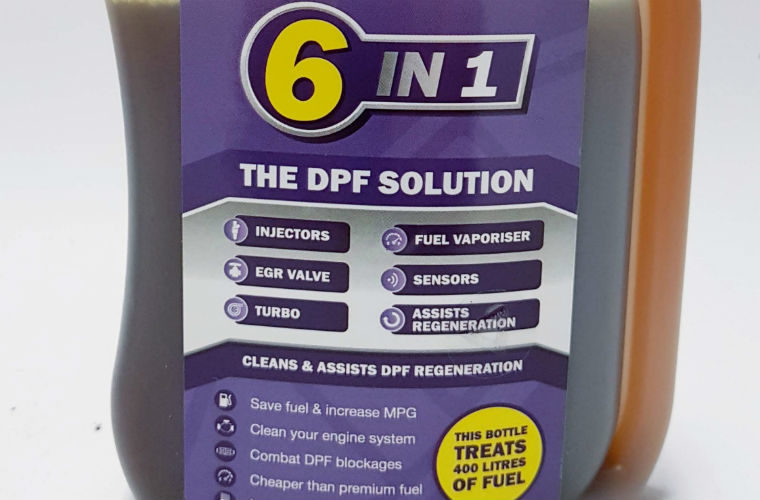Stuart Still, technical co-ordinator at European Exhaust & Catalyst (EEC) has published guidance for technicians who work with diesel additives.
Introducing himself, he said: “Over the years I must have dealt with every DPF related issue you could imagine, but still the majority of customers when I contact them say that the new DPF which has been fitted is faulty.
“After looking into the issue I would explain that the problem was not the DPF but, more often than not, an injector, pressure sensor, temperature sensor or EGR valve issue.
“Whichever component was at fault there would always be a knock on effect with an increase of particulate matter (PM) resulting in carbon coating injectors, inlet, exhaust, EGR valves, turbo etc.
“This results in an inability for the system to meet the required condition to activate the DPF regeneration process, ultimately ending in a blocked DPF.
EEC 6 in 1 DPF solution
” Just over two years ago after looking at the cleaning products that are available we took the decision to produce our own additive to reduce the build-up of carbon on these components resulting in our 6 in 1 DPF solution.
“This product cleans all of the relevant components and assists the regeneration process.
“Since the launch of 6 in 1 it has been a tremendous success supported by industry, private endorsements and recommendations.
“Inaccurate statements”
“Since entering this new product sector I have been staggered by the amount of inaccurate statements that are being made regarding what these fuel additives products claim they can do concerning their cleaning power of components including the DPF.”
Listing a number of examples of what Stuart describes as “inaccurate statements”, such as ‘when the vehicle gets to the correct temperature the vehicle does a DPF regen and burns the soot to ash to lower the contents inside the DPF’ technicians are urged to be cautious.
Stuart added: “Carbon-based soot is formed by the incomplete combustion of fuel.
“When burnt, this soot turns into carbon dioxide gas.
“It does not produce any ash.
How diesel particulate matter is produced
- In perfect combustion of diesel fuel, carbon dioxide and water are the end products, but in reality, the incomplete combustion results in emissions that include carbon monoxide (CO), unburnt hydrocarbons (HC) and un-burnt carbon particles or soot which form the main part of PM. PM also includes material derived from engine oils and other inorganic debris, which are known as ash. Unlike soot, ash cannot be burned away.
- PM is the visible cloud of black smoke that before DPFs used to appear from engine start-up and sometimes continued to appear when the engine is running.
PMs can be categorized into two groups; particles up to 10 microns (PM10) and particles of less than 2.5 microns in size (PM2.5).
Stuart said: “Although most diesel particulates are very small, more than 99 per cent are in the sub 2.5 microns range and all are damaging to your health, as they are carcinogenic according to the World Health Organisation (WHO).
“This is why properly working DPFs are important to the future of diesel.”
Stuart also gives another example of an inaccurate statement: “our fuel additive results show that the process removes both the soot and ash content inside the DPF.”
Explaining, he said: “To remove the ash from a DPF without removing the unit from the vehicle by dissolving it would require a strong acid based product which would require a warning on the container and instructions on how to safely handle the product using personal protective equipment (PPE).
“Other claims that have been made: ‘our fuel additive will clean EGR valves, turbo’s etc.’
Fuel borne catalyst
“Only additives containing fuel borne catalyst (FBC) will remove carbon from all components post combustion.
“A fuel additive without an FBC would not survive the combustion process.”
EEC recommends a concentrated additive such as its 6 in 1 which is added every time refuelling is completed so that it is present all of the time.
It contains a high tech FBC which is metallic but not iron.
More information can be found by following the ‘more details’ link.







